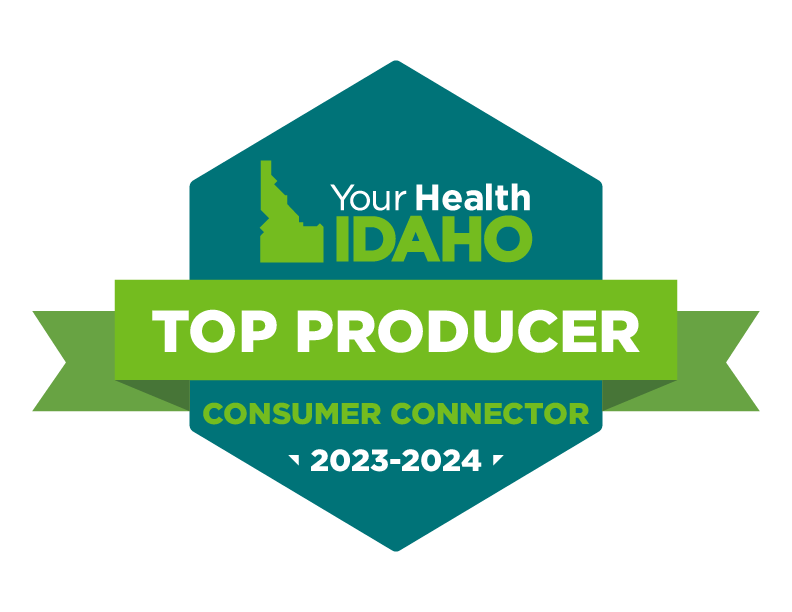Open enrollment for health insurance runs one time a year. This is the time designated by the government when anyone can enroll in a health insurance plan. Open enrollment this year (2017) begins the 1st of November and ends December 15th. Outside of open enrollment we are required to have a qualifying life event that allows us a 60-day special enrollment period in which we can purchase insurance.
What you pay for insurance is a percentage of your income based on your household size. Using the chart below, locate your family size (on the left) then move across the row until you reach the closest number to your annual household income. The last row of the chart will show you the percentage of your income you will pay for the year.
For example, a household of 6 making $65,000 annually would pay approximately 6.3% of their income for the year for their health insurance. (65,000*.063=$4,095) Divide this total by 12 and it will give you the approximate monthly amount you would pay ($4095/12=$341.25). This is for a base plan. Prices vary from this amount according to what plan you choose.
When Obamacare was created, the insurance companies wanted some reassurance that people wouldn’t wait until they were sick to buy insurance, so an open enrollment period was created. Outside of this time we are required to have a qualifying life event in order to enroll.
A tax credit is the amount of money the federal government sends every month to the insurance company on your behalf. Remember, this will always be reconciled when you file your taxes the following spring.
The federal law says if we make 100% of the federal poverty level or more we can get a tax credit to help us pay for our insurance. If we make less than this amount, the federal law says we do not get a tax credit to help with our insurance, we should get Medicaid. However, the state of Idaho says that if we put 200,000 more adults on our Medicaid roles our budget fails. Therefore, the state of Idaho did not expand their Medicaid.
We should include any income that reaches our adjusted gross income. This is usually found on line 37 of the regular 1040 tax form. This includes income from jobs, self-employment, social security, retirement, pensions, unemployment, capital gains, investments, farming or fishing properties or other taxable income. There are types of income that should NOT be included, such as: Student Loans, Veteran’s disability payments, Workers’ compensation, Child Support, Gifts or no-taxable Social Security (SSI). Income for ALL household members needs to be included.
The Department of Health and Welfare requires the last 30 days of pay stubs for W2 income. If you are self-employed, you need to provide a copy of your most recently filed taxes or a profit/loss statement from your company. You can also use a letter from a CPA estimating your income.
At Parker Insurance, we feel there are many people who have the ability to make enough money to qualify for the Advanced Premium Tax Credit. Did you know you can increase your monthly income by $248 just by donating blood? Do you have an idea for a new business? Do you want to improve your job? We have contacts who may be able to assist you. Email us today and we can send you a list of our contacts.
If we fall into the category where our income is over 400% of the federal poverty guidelines, we end up paying our entire health insurance premium. At Parker Insurance, we have several options available that may be far more affordable. Please give us a call at 208-356-0009 and we will go over your specific needs.
In order for us to have someone on our insurance we need to claim them as a dependent on our taxes. If they are not a dependent on our tax form they need to purchase a separate plan.
We need to keep in mind that our advanced premium tax credit (APTC) will be reconciled when we file our taxes. We need to file our taxes on time! We also need to report any changes to our household size or our household income. If we are offered insurance through our employer, we are no longer eligible for assistance and we need to report the change. It is also important that we maintain a current address with Your Health Idaho and the Department of Health and Welfare so we receive important correspondence concerning our eligibility. Please contact Parker Insurance with any changes either by email at service@myidahohealth.com or give us a call at 208-356-0009 and we can help!
78% of people purchase a silver plan because this is the best value for them. Silver Plans are the only plans that qualify for out of pocket cost sharing. This means they lower your deductible and maximum out of pocket costs based on your income. These can cover up to 93% of all medical expenses.
You can still purchase health insurance on the exchange without premium assistance. If you are offered employer insurance, you are not eligible for a premium tax credit. However, you can still purchase health insurance on the exchange, but you would be responsible for the entire premium–unless that employer insurance is deemed “unaffordable.” The government decides what is affordable by asking “what does it cost for employee-only coverage?” If the employee pays less than 9.66% of their income for employee-only coverage then it is deemed affordable for the family. If the coverage is more than 9.66% of their income then it is considered “unaffordable” and you may be eligible for the Advanced Premium Tax Credit.
You need to be an Idaho resident to purchase an Idaho Health Insurance policy. This means you need to live in Idaho and file an Idaho tax return.
Certain life changing events can qualify us for a Special Enrollment Period. This allows us to purchase insurance outside of open enrollment. Examples of qualifying life events are birth, death, divorce, marriage, turning 26 and aging out of your parents’ insurance, involuntary loss of coverage, moving into the country, or an income change. If you believe you have a life changing event that qualifies for a Special Enrollment Period you will have 60 days from the date of your event to report your life changing event, provide documentation to prove the event and then select and enroll in a plan.



